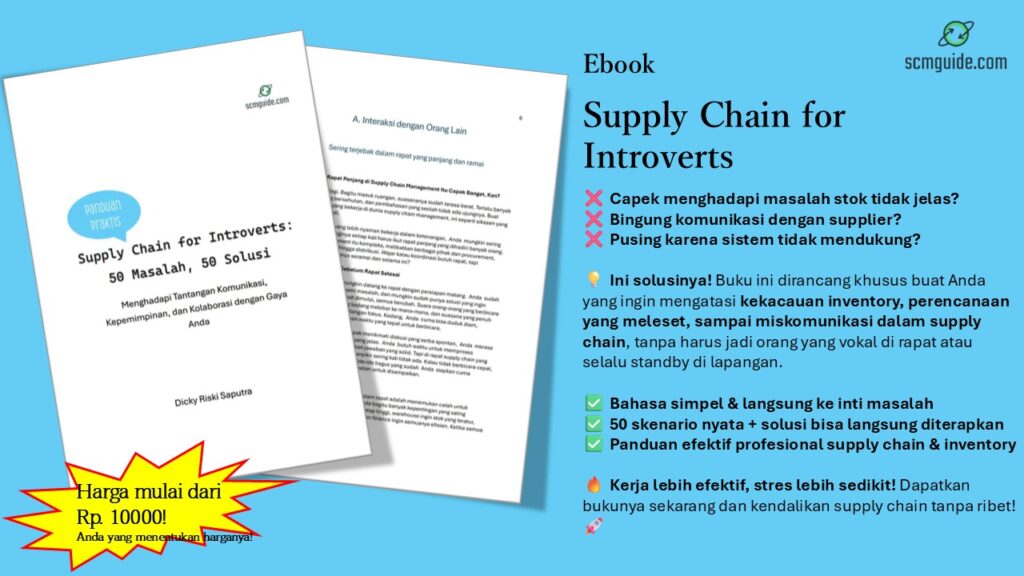Mistakes in Supply Chain Management (SCM) can have wide and significant impacts on your company’s operations. Understanding the most serious SCM mistakes and how to address them effectively is crucial for maintaining smooth operations and achieving long-term success.
In this article, we’ll explore the most critical SCM mistakes and how you can address and correct them with a constructive approach.
Before we go further into this topic, don’t forget to follow my LinkedIn account. You’ll get more helpful insights on supply chain management there.
Table of Contents
Major SCM Mistakes and Their Impact
Mistakes in SCM are considered severe due to their broad and deep impact on your company’s operations. One of the most significant mistakes is the lack of coordination and communication between different parts of the supply chain.
When communication between teams is ineffective, various problems can arise, such as delays in delivery, overstocking or understocking, and product quality issues. These problems can harm your company by reducing customer satisfaction, increasing costs, and leading to financial losses.
Poor coordination can lead to miscommunication that disrupts the entire supply chain. Delays in receiving raw materials can halt production, while inventory imbalances can disrupt delivery schedules and sales. This not only affects customer satisfaction but also damages your company’s reputation and impacts overall profitability.
Planning errors are also among the most serious. Inadequate demand and production capacity planning can result in stockouts or excess inventory. Stockouts impede production and prevent the company from meeting market demand, while excess inventory increases storage costs and the risk of obsolescence. Both stockouts and excess inventory directly affect your profit margins and your company’s market reputation.
Neglecting risk management is another major mistake that can have severe consequences.
The supply chain is vulnerable to disruptions such as sudden changes in demand, supply interruptions, or natural disasters.
Without adequate risk mitigation strategies, these disruptions can significantly halt your company’s operations.

For example, if you rely heavily on a single supplier and that supplier faces a disruption, you might experience a severe shortage of raw materials, which can halt production and product delivery.
Poor data quality is also a significant issue. Inaccurate or incomplete data can affect many operational aspects, including inventory control, demand planning, and strategic decision-making. Bad data can lead to inventory imbalances and disrupt customer relationships, affecting strategic planning and long-term performance analysis.
A lack of customer focus is another serious mistake. A supply chain that does not consider customer needs and preferences can lead to customer dissatisfaction, loss of market share, and negative impacts on revenue. For instance, if products are not available on time or do not meet customer expectations, it can harm your company’s reputation and reduce competitiveness in the market.
You might also like:
- How to Present Data in Supply Chain: Don’t Add Complexity
- PPIC: The Common Enemy in the World of Manufacturing
Steps to Correct Major SCM Mistakes
When dealing with major SCM mistakes, the first step is to conduct a thorough evaluation to identify the root causes of the issues. This involves analyzing data, interviewing relevant teams, and mapping processes to understand where and why mistakes are occurring. With a deep understanding of the problem causes, you can determine the right solutions and prevent similar mistakes in the future.
After identifying the issues, the next step is to improve the related processes and procedures. If communication is a major issue, you may need to introduce better communication systems or provide additional training to staff. For example, implementing more efficient communication tools or adopting collaboration platforms can enhance information flow and reduce miscommunication in the supply chain.
Implementing technology can also greatly assist in resolving many SCM problems. Advanced Supply Chain Management (SCM) systems or Enterprise Resource Planning (ERP) software can improve inventory tracking, demand planning, and coordination between various parts of the supply chain. This technology can reduce human errors, increase data accuracy, and facilitate better communication and collaboration.

For example, integrated SCM software can provide better visibility into the entire supply chain, allowing you to monitor order statuses and inventory management in real-time.
Developing risk management plans and contingency strategies is also crucial. Identifying risks, assessing their impacts, and preparing emergency measures are all part of this plan.
With a solid risk management plan, you can mitigate the impact of potential disruptions, such as supply interruptions or sudden demand changes. For instance, finding alternative suppliers or building up stock reserves can help you address potential supply chain disruptions.
Improving data quality is another key step. Ensure that the data used for planning and decision-making is accurate and up-to-date. This may require upgrading data systems, such as updating software or training staff in data management. With accurate data, you can make better decisions regarding inventory planning, procurement, and marketing strategies.
If mistakes involve suppliers or customers, it’s important to work on improving relationships and rebuilding trust. Rebuilding damaged relationships requires open and transparent communication and concrete actions to address existing problems.
Additionally, providing extra training to the team to address skill or knowledge gaps that may have contributed to the mistakes is also a good step. Proper training can enhance your team’s ability to handle challenges and prevent future mistakes.
Once improvements are implemented, it’s important to continuously monitor results and follow up to ensure that issues do not recur. Regular reviews and adjustments can help maintain improvements and enhance processes continuously. Periodic evaluations allow you to assess the effectiveness of the implemented improvements and make adjustments as needed to ensure optimal results.
You might also like:
- The Importance of Involving Everyone from the Beginning in Supply Chain Projects
- What Repeated Mistakes in Supply Chain Management Can Teach Us
Approach to Mistakes: Focus on Learning, Not Punishment
When dealing with major SCM mistakes, a constructive approach is much more effective than punishment or blaming individuals. Punishment often causes tension and harms team morale, whereas a more productive approach involves understanding the root causes of mistakes and improving the systems and processes involved. Focusing on learning and improvement by discussing mistakes openly can enhance processes and prevent similar mistakes in the future.

A constructive approach involves thorough analysis to understand the primary causes of mistakes and developing appropriate solutions. Punishing or blaming individuals often does not solve the underlying problems and can lead to a non-supportive work environment.
Instead, discussing mistakes openly with the team can help identify areas for improvement and develop strategies to prevent similar mistakes in the future.
Supporting and guiding individuals involved in mistakes is crucial to help them understand and correct their errors. This can also improve their skills and competence, allowing them to contribute more effectively in the future. Fair and proportional evaluation and corrective actions may be needed in some cases, but these actions should be focused on improvement rather than punishment.
Building a culture of responsibility where mistakes are viewed as opportunities to learn and grow will create a more positive and productive work environment.
In this culture, mistakes are not seen as failures but as part of the learning and improvement process. This approach promotes collaboration and innovation and helps the team face challenges with a more positive attitude.
With this approach, you can not only address existing issues but also foster a more supportive and collaborative work culture. This creates an environment where the team feels supported and motivated to contribute maximally and is better prepared to face future challenges.
Conclusion
Addressing the most serious mistakes in Supply Chain Management requires a deep understanding of the impact of various types of mistakes and a constructive approach to improvement. Mistakes such as lack of coordination and communication, inadequate planning, neglecting risk management, poor data quality, and insufficient customer focus can harm your company’s operations.
Steps to correct these mistakes involve thorough evaluation, process improvement, technology implementation, risk management, data quality enhancement, and relationship repair with suppliers or customers. A constructive approach focusing on learning and improvement, rather than punishment, is crucial for creating a positive and productive work environment.
By effectively implementing these steps, you can address SCM mistakes, enhance operational performance, and achieve long-term success. Cultivating a culture of responsibility and learning in the workplace will help your company continue to grow and adapt to dynamic market changes.
I hope you find it helpful!
Please share this article with your colleagues so they can also benefit. For more insights on supply chain management, follow my LinkedIn account. You’re free to use all articles on this blog for any purpose, even for commercial use, without needing to give credit.

 by
by 



